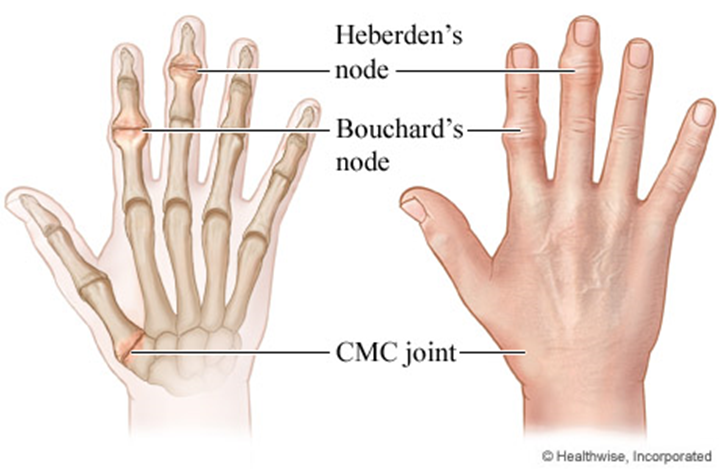An overweight, young adult client who was recently diagnosed with type 2 diabetes mellitus is admitted for a hernia repair. The client reports feeling very weak and jittery. Which actions should the nurse implement? (Select all that apply.)
Measure pulse and blood pressure
Document anxiety on the surgical checklist
Assess skin temperature and moisture
Check fingerstick glucose level
Administer a PRN dose of regular insulin
Correct Answer : A,C,D,E
A. Measure pulse and blood pressure:
This action is crucial to assess the client's cardiovascular status. Weakness and jitteriness can be related to changes in blood pressure or cardiac function. Measuring pulse and blood pressure helps determine the client's hemodynamic stability.
B. Document anxiety on the surgical checklist:
While anxiety is a valid consideration, addressing the physiological aspects of the client's symptoms takes precedence.
C. Assess skin temperature and moisture:
Assessing skin temperature and moisture provides information about the client's perfusion and hydration status. Changes in skin characteristics can be indicative of underlying issues, and in a diabetic patient, it's important to monitor for potential complications affecting skin integrity.
D. Check fingerstick glucose level:
Given the client's recent diagnosis of type 2 diabetes mellitus and the reported symptoms of weakness and jitteriness, checking the fingerstick glucose level is crucial. Fluctuations in blood glucose levels, whether hyperglycemia or hypoglycemia, can contribute to these symptoms. This test provides immediate information about the client's glycemic status.
E. Administer a PRN dose of regular insulin:
If the fingerstick glucose level indicates hyperglycemia and the healthcare provider has prescribed a PRN (as needed) dose of regular insulin for high blood sugar, administering insulin may be necessary to address hyperglycemia promptly. This is in line with diabetes management protocols, and the nurse should follow specific orders and guidelines for insulin administration.
Nursing Test Bank
Naxlex Comprehensive Predictor Exams
Related Questions
Correct Answer is A
Explanation
A. Discuss approaches to chronic pain control with the client:
This is the correct answer. Heberden's nodes are bony enlargements that can occur in osteoarthritis, particularly in the joints of the fingers. These nodes can be associated with pain. Discussing approaches to chronic pain control with the client is an appropriate nursing intervention to address the client's pain and improve quality of life.
B. Review the client's dietary intake of high-protein foods:
Dietary intake of high-protein foods is not directly related to the management of Heberden's nodes in degenerative joint disease. Pain control and joint protection measures are more relevant.
C. Notify the healthcare provider of the finding immediately:
While it's important to communicate significant findings to the healthcare provider, the presence of Heberden's nodes in degenerative joint disease may not require immediate notification unless there are other concerning symptoms or complications.
D. Assess the client's radial pulses and capillary refill time:
Assessing radial pulses and capillary refill time is not directly related to managing Heberden's nodes in degenerative joint disease. These nodes are primarily a result of joint changes in osteoarthritis.

Correct Answer is D
Explanation
A. Eat a diet high in carotene:
While a healthy diet is important for overall well-being, there is no evidence to suggest that a diet high in carotene specifically prevents or treats glaucoma. The focus in glaucoma management is on intraocular pressure control.
B. Wear prescription glasses:
Prescription glasses may be beneficial for addressing refractive errors, but they do not specifically address the management of glaucoma. The client's concern about driving through a tunnel is more likely related to changes in peripheral vision associated with glaucoma.
C. Avoid frequent eye pressure measurements:
This is not the most important instruction. Monitoring intraocular pressure is a crucial aspect of glaucoma management, and the frequency of measurements is determined by the healthcare provider. Regular monitoring helps assess the effectiveness of treatment and disease progression.
D. Maintain the prescribed eye drop regimen:
This is the correct answer. The most important instruction for the client is to adhere to the prescribed eye drop regimen. Medications, often in the form of eye drops, are commonly used to lower intraocular pressure and manage glaucoma. Consistent use of prescribed medications is critical for controlling the condition and preventing further vision loss.

Whether you are a student looking to ace your exams or a practicing nurse seeking to enhance your expertise , our nursing education contents will empower you with the confidence and competence to make a difference in the lives of patients and become a respected leader in the healthcare field.
Visit Naxlex, invest in your future and unlock endless possibilities with our unparalleled nursing education contents today
Report Wrong Answer on the Current Question
Do you disagree with the answer? If yes, what is your expected answer? Explain.
Kindly be descriptive with the issue you are facing.
